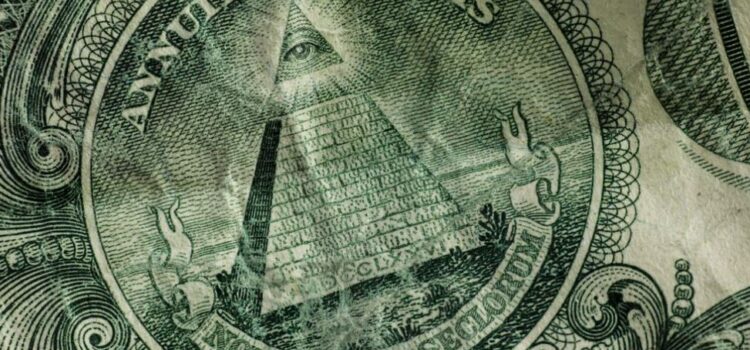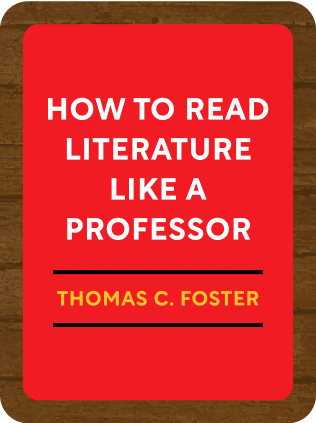

This article is an excerpt from the Shortform book guide to "How to Read Literature Like a Professor" by Thomas C. Foster. Shortform has the world's best summaries and analyses of books you should be reading.
Like this article? Sign up for a free trial here .
Why is it so difficult to interpret symbols in literature? What do you do if an author uses unique symbols?
Interpreting symbols in literature isn’t always easy. Literary symbols can sometimes overlap, develop new meanings over time, or be unique to an author. However, there are some common symbols and themes you can look out for.
Continue on for more information about interpreting literary symbols.
Recognize and Interpret Metaphors
Even readers who are new to literature usually know to ask themselves, “Is this a symbol?” The next question they might ask is, “what does it mean?” However, interpreting symbols in literature isn’t always easy.
One problem with symbols is that they can mean so many different things to different readers. In fact, it is the mark of a great piece of literature when readers and scholars can come to different, even conflicting, interpretations.
(The exception to this rule is allegory. Allegories convey a particular message by associating a symbol with one specific meaning.
- Example: Paul Bunyon’s The Pilgrim’s Process is an allegory in which the main character, Christian, is traveling to the Celestial City. This is meant to directly convey the devout Christian getting to heaven. There is no ambiguity that allows for a different understanding of the story.)
When Symbols Overlap
Another problem with symbols is that different authors can use the same symbol in many different ways. For example, let’s look at three different rivers from three different authors:
- Mark Twain uses the Mississippi River in The Adventures of Huckleberry Finn to symbolize both danger and safety. Although Huck and Jim are mostly safe from the dangers they flee on land, they also battle the dangers of river travel.
- Hart Crane uses American rivers in his poem The Bridge to symbolize connectivity. Although rivers cut off two pieces of land horizontally, they also connect other lands vertically.
- T.S. Eliot uses the River Thames in The Wasteland to symbolize the decay of modern life in Western culture.
The final problem with symbols is that they aren’t always objects. Actions can also be used as symbols. For example, Robert Frost’s poem “The Road Not Taken” is literally about deciding between two paths. But it has become a universally used graduation poem because it can symbolize choosing your direction in life.
Interpreting Symbols
When interpreting symbols in literature, think of it as an imaginative and intellectual exercise. You should actively bring yourself to the encounter with the text. Use your instincts about how the text makes you feel, and don’t be afraid to use those feelings to infer meaning from symbols. Associate the symbol with everything you can, then toss out the associations that don’t seem to apply.
Remember: A symbol’s literal meaning within the narrative will always be its primary purpose. The metaphorical meaning is secondary to that. If a novel is unsuccessful at telling the story, no amount of symbolism will change that. On the other hand, if a novel presents a great story and a variety of figurative symbols and imagery, that is the sign of a great piece of literature.
Example: A Passage to India
In E. M. Forster’s A Passage to India, a progressive woman named Adela is taken on an outing to the Marabar Caves by an Indian man named Dr. Aziz. In the cave, Adela has a confusing experience. She runs out of the caves bruised and scared, feeling as though she’s been assaulted. She later discounts her own story, unable to be sure of what transpired in those caves.
The mysterious caves in the story are clearly symbols—but that’s the only thing that’s clear about them. Readers can infer a variety of meanings from the caves. Here are just a few:
- Considering caves as the dwellings of our earliest ancestors, you might read the caves as a symbol of the most primitive elements of human nature. Maybe Adela was scared when confronted with the most basic element of her own nature.
- Perhaps Forster was implying that every person’s cave is different. Throughout the beginning of the novel, the caves are only described very vaguely, as though they must be seen to be understood. The reader could interpret the caves as standing for our own, individual fears.
- Adela’s cave could symbolize her fear of matrimony and sex. She is on the cusp of an arranged marriage and comes out of the cave feeling as though she has been assaulted. Perhaps this is a symbol of her feeling the marriage is being thrust on her.
- The caves could be a racial or cultural symbol in some way.
A Passage to India is a great work of literature because of its networks of possible meanings and significance. The fact that every reader can bring his own experience to the book and come away with a different interpretation of the caves speaks to the power of its symbols.
Unique Symbols
Not all authors use common symbols, such as flight, that have ready-made associations attached. Some writers use a symbol that is private to them, and that makes it slightly more challenging for the reader to interpret.
- Example: In John Donne’s poem “A Valediction: Forbidden Mourning,” the speaker is saying goodbye to his beloved. He compares himself and his lover to a geometry compass—she is the static foot and he is the pencil point. He says that he’ll always be connected to her, no matter how far he roams, because she is the center of his life.
There aren’t many poems that employ mathematical instruments as symbols, so you can’t fall back on your expectations to interpret the symbolism of the compass. At first, you may not understand the ways in which two people could be like the foot and point of a compass, or what this comparison signifies. However, you have other associations of goodbyes, themes of connectedness, and lovers’ promises that you can look to for guidance in interpreting the compass in this poem.
You can decode unique symbols by using what you learn from the work itself. Every literary work teaches you how to understand it as you read along.
- Example: There is no other novel that is like James Joyce’s Ulysses, so you won’t be ready to read it until you begin reading it. Joyce presents his narrative strategies in a way that unfolds chapter by chapter and allows the reader to come along for the ride.
Another strategy for interpreting unique symbols is to trust what you know. Every novel, poem, story, movie, and play you’ve read or seen in the past has been preparation for the next thing you will read. Don’t deny yourself credit for all of the examples of symbolism that you’ve encountered—you know more than you might think.
Example: W. B. Yeats
Irish poet W. B. Yeats is notorious for employing very unique or private symbols in his body of work. One in particular: A tower with a winding staircase. He bought the tower and lived in it for many years, and was always interested in the image.
In his poetry, Yeats uses this tower to symbolize many different things in many different ways:
- A representation of being rooted in Ireland.
- A setting from which to watch the unfolding Civil War.
- A symbol for imperfect art.
- An illustration of retreat from the modern world.
- A means of connecting to past aristocracy.
Because there are no uses of this particular tower and its winding staircase anywhere else in literature, readers will find Yeats’s work challenging at first. In fact, it might take several readings of each poem and a study of Yeats’s personal history to even recognize the tower, much less understand all of its implications. That is the beauty and the challenge of such unique symbols.

———End of Preview———
Like what you just read? Read the rest of the world's best book summary and analysis of Thomas C. Foster's "How to Read Literature Like a Professor" at Shortform .
Here's what you'll find in our full How to Read Literature Like a Professor summary :
- How to get more out of the novels that you read
- Why you should focus on memory, symbols, and patterns to understand literature better
- Why sex scenes aren't always about sex






